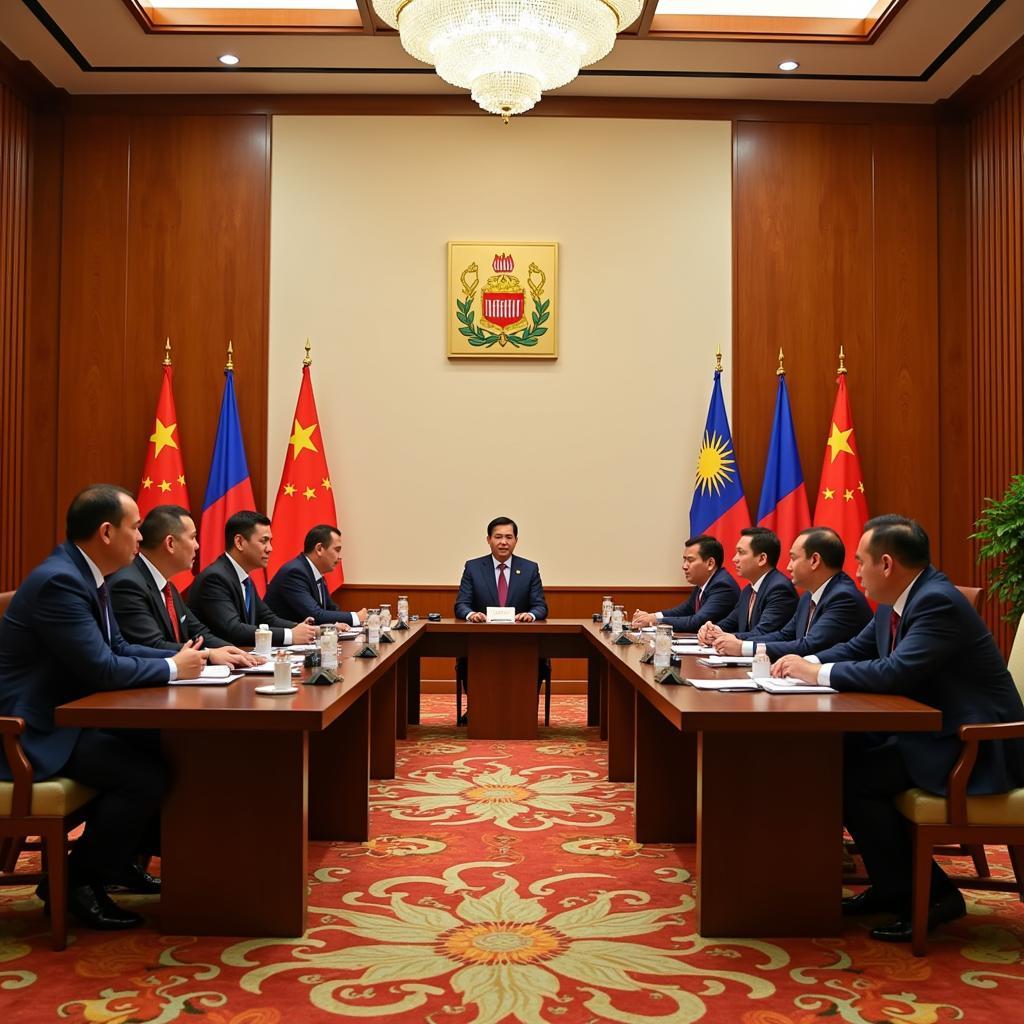The “ASEAN model” is a term frequently used to describe the unique approach to regional integration adopted by the Association of Southeast Asian Nations (ASEAN). While not officially defined, searching for “asean model wikipedia” often leads individuals down a path of understanding how this dynamic region operates on the world stage.
ASEAN’s approach stands in contrast to more formalized models like the European Union (EU), prioritizing consensus-building, non-interference, and gradual economic integration. This article delves into the key characteristics of the ASEAN model, its strengths, limitations, and its implications for Southeast Asia and beyond.
The Cornerstones of the ASEAN Model
The ASEAN model is characterized by several core principles:
-
Consensus-Based Decision-Making: ASEAN operates on the principle of “ASEAN consensus,” where decisions are reached through consultation and agreement among all member states. This approach ensures that all voices are heard and fosters a sense of ownership over regional initiatives.
-
Non-Interference in Internal Affairs: Member states are committed to respecting each other’s sovereignty and territorial integrity. ASEAN avoids interfering in the domestic affairs of its members, promoting a climate of trust and stability.
-
Gradualism and Flexibility: Integration within ASEAN progresses at a pace comfortable for all members. The model emphasizes flexibility, allowing member states to opt-in or out of specific agreements or initiatives based on their national interests and readiness.
-
Open Regionalism: ASEAN actively engages with external partners and participates in dialogue partnerships with countries and organizations outside the region. This outward-looking approach fosters cooperation and strengthens ASEAN’s position in the global arena.
 ASEAN Summit Meeting
ASEAN Summit Meeting
Strengths of the ASEAN Model
The ASEAN model has contributed significantly to regional peace and stability in Southeast Asia. The emphasis on dialogue and cooperation has helped to manage historical tensions and territorial disputes among member states. Economically, ASEAN has emerged as a dynamic region, with trade and investment flourishing under the framework of the ASEAN Economic Community (AEC).
The model’s flexibility allows member states to pursue integration at their own pace, accommodating diverse levels of economic development and political systems. This adaptability has been crucial in holding the organization together despite internal differences and external challenges.
Limitations and Challenges
Despite its successes, the ASEAN model also faces criticism. The consensus-based approach, while promoting inclusivity, can sometimes lead to slow decision-making and difficulty in addressing urgent regional issues. The non-interference principle, while upholding sovereignty, has at times limited ASEAN’s ability to effectively address human rights concerns or internal conflicts within member states.
Furthermore, the lack of a strong institutional framework and enforcement mechanisms poses challenges to the effective implementation of agreements.
“While the ASEAN model has served the region well, evolving geopolitical realities require a more proactive and responsive organization. Strengthening ASEAN’s institutional capacity and finding mechanisms for more effective implementation of agreements will be key to its future success.” – Dr. Lina Nguyen, Southeast Asian Studies expert.
The ASEAN Model in a Changing World
The ASEAN model continues to evolve in response to a dynamic regional and global landscape. ASEAN faces new challenges, including geopolitical competition, transnational security threats, and the need to address issues like climate change and sustainable development.
To remain relevant, ASEAN must strengthen its institutional capacity, enhance its decision-making processes, and demonstrate greater unity and resolve in addressing these challenges.
Conclusion
The ASEAN model, with its emphasis on consensus, non-interference, and gradualism, has played a pivotal role in fostering peace, stability, and economic growth in Southeast Asia. While the model has its limitations, its flexibility and focus on dialogue remain valuable assets in navigating the complexities of regional integration in a rapidly changing world.
For ASEAN to continue thriving, it must adapt to new realities, strengthen its mechanisms, and demonstrate its ability to effectively address emerging challenges while upholding its core principles of cooperation and mutual respect.
FAQs
1. What is the ASEAN Way?
The “ASEAN Way” refers to the unique set of diplomatic norms and practices that guide ASEAN’s interactions. It emphasizes consensus-building, non-interference, and informal diplomacy.
2. Is ASEAN a political or economic organization?
ASEAN is both a political and economic organization. It aims to promote political stability and security while also fostering economic integration and development among its member states.
3. What are the main achievements of ASEAN?
ASEAN has played a crucial role in maintaining peace and stability in Southeast Asia. It has also facilitated economic integration, leading to significant growth and development in the region.
4. What are the challenges facing ASEAN today?
ASEAN faces a number of challenges, including geopolitical rivalry, transnational security threats, economic disparities, and the need to address issues like climate change and sustainable development.
5. How can I learn more about specific aspects of ASEAN, such as the ASEAN Economic Community (AEC)?
For more in-depth information about specific aspects of ASEAN, you can visit the asea wikipedia. Additionally, resources on the ase closed wiki can provide further insights.
Need More Information?
For assistance or more information, please don’t hesitate to contact us:
Phone: 0369020373
Email: aseanmediadirectory@gmail.com
Address: Thôn Ngọc Liễn, Hiệp Hòa, Bắc Giang, Việt Nam
Our dedicated customer support team is available 24/7 to assist you.


